| Article ID | Journal | Published Year | Pages | File Type |
|---|---|---|---|---|
| 4538462 | Deep Sea Research Part II: Topical Studies in Oceanography | 2006 | 16 Pages |
Measurements of the climate-cooling trace gas dimethylsulphide (DMS) and other ancillary data, including pigments, nutrient concentrations and the depth of the mixed layer, were made over a wide latitude range during the UK Atlantic Meridional Transect (AMT) programme. The data were used to test algorithms from the recent literature for their effectiveness at predicting surface DMS concentrations. Dividing the data by research cruise (i.e. year and season) and into biogeochemical provinces aided data interpretation. For this new data set, many of the available algorithms over-predicted the measured DMS concentration. The best fit was found with a dilution model based on the depth of the mixed layer [Aranami, K., Tsunogai, S., 2004. Seasonal and regional comparison of oceanic and atmospheric dimethylsulfide in the northern North Pacific: dilution effects on its concentration during winter. Journal of Geophysical Research 109D (12), art. no. D12303], but there are still parts of the data that cannot be explained. We suggest that in order to test, improve and refine current predictive models, further data for DMS and related compounds are needed for remote oligotrophic regions.
